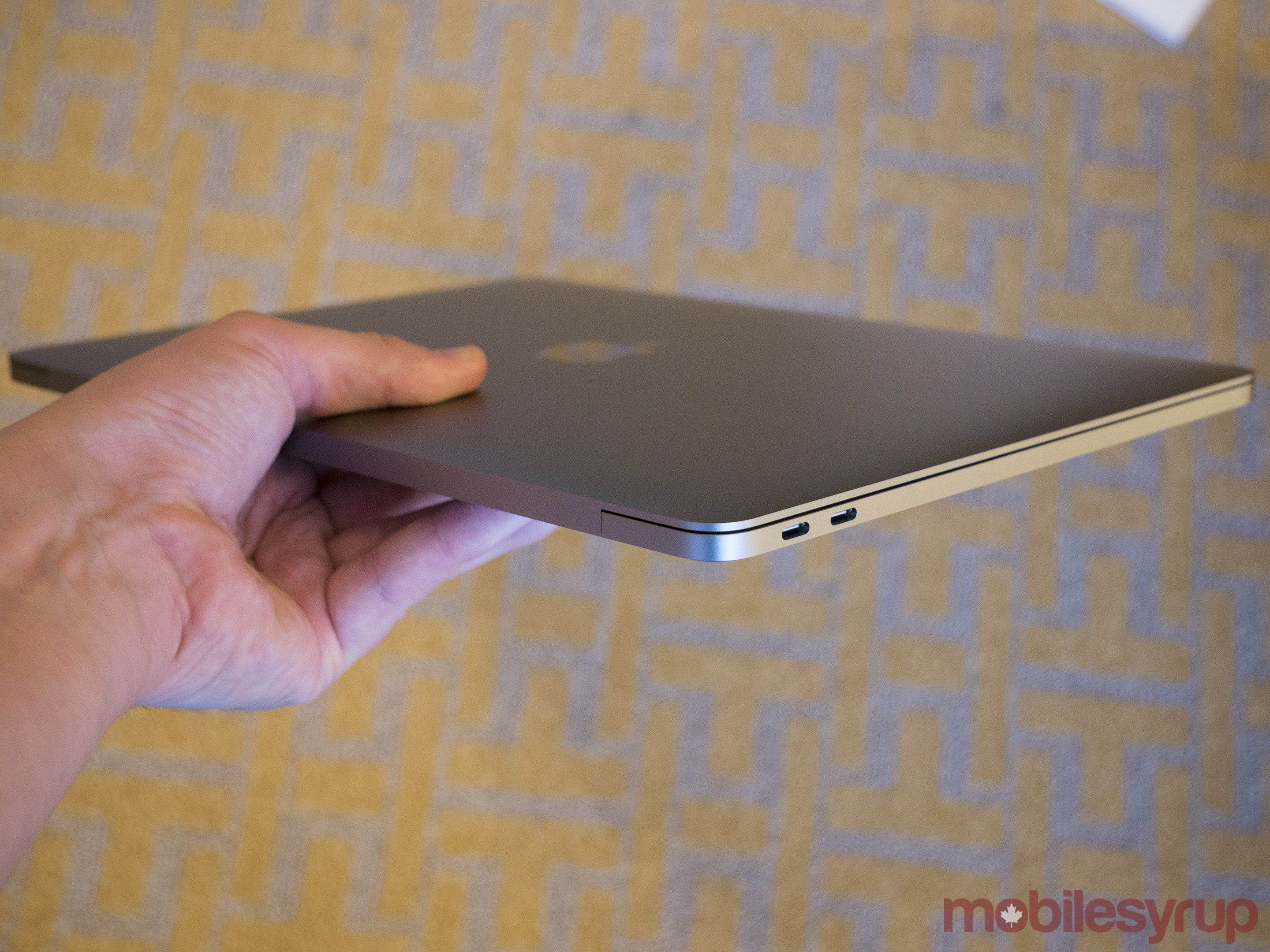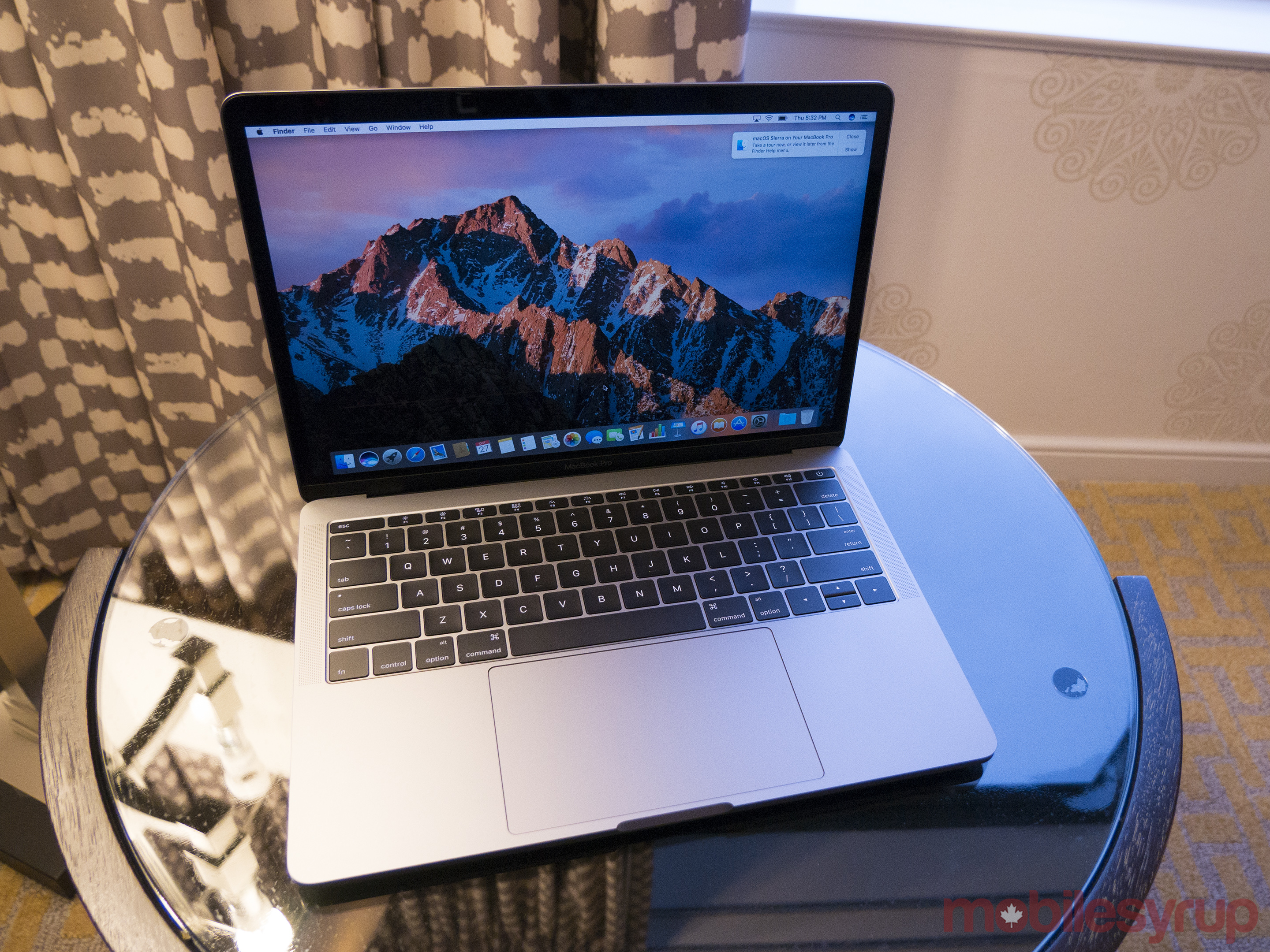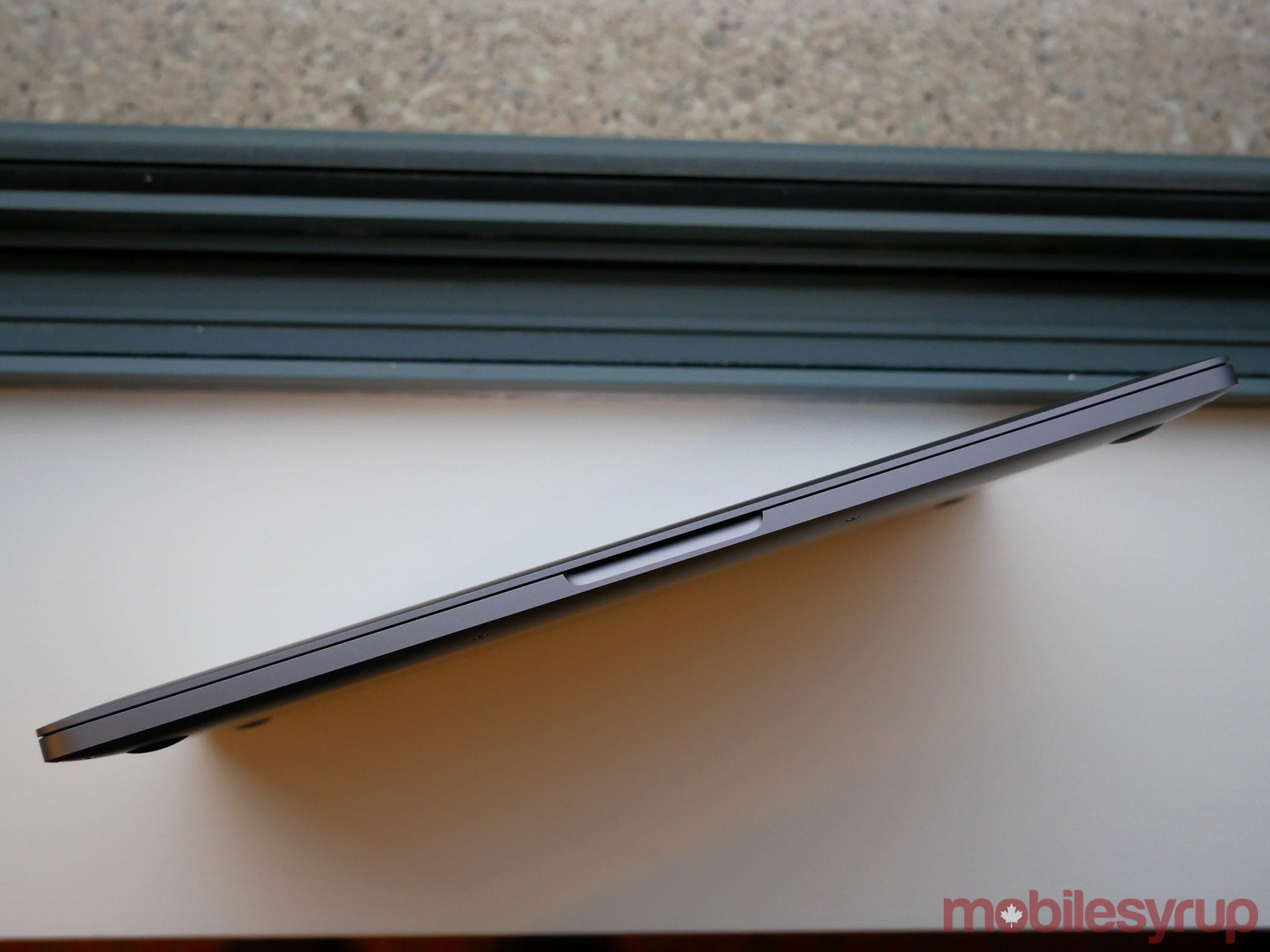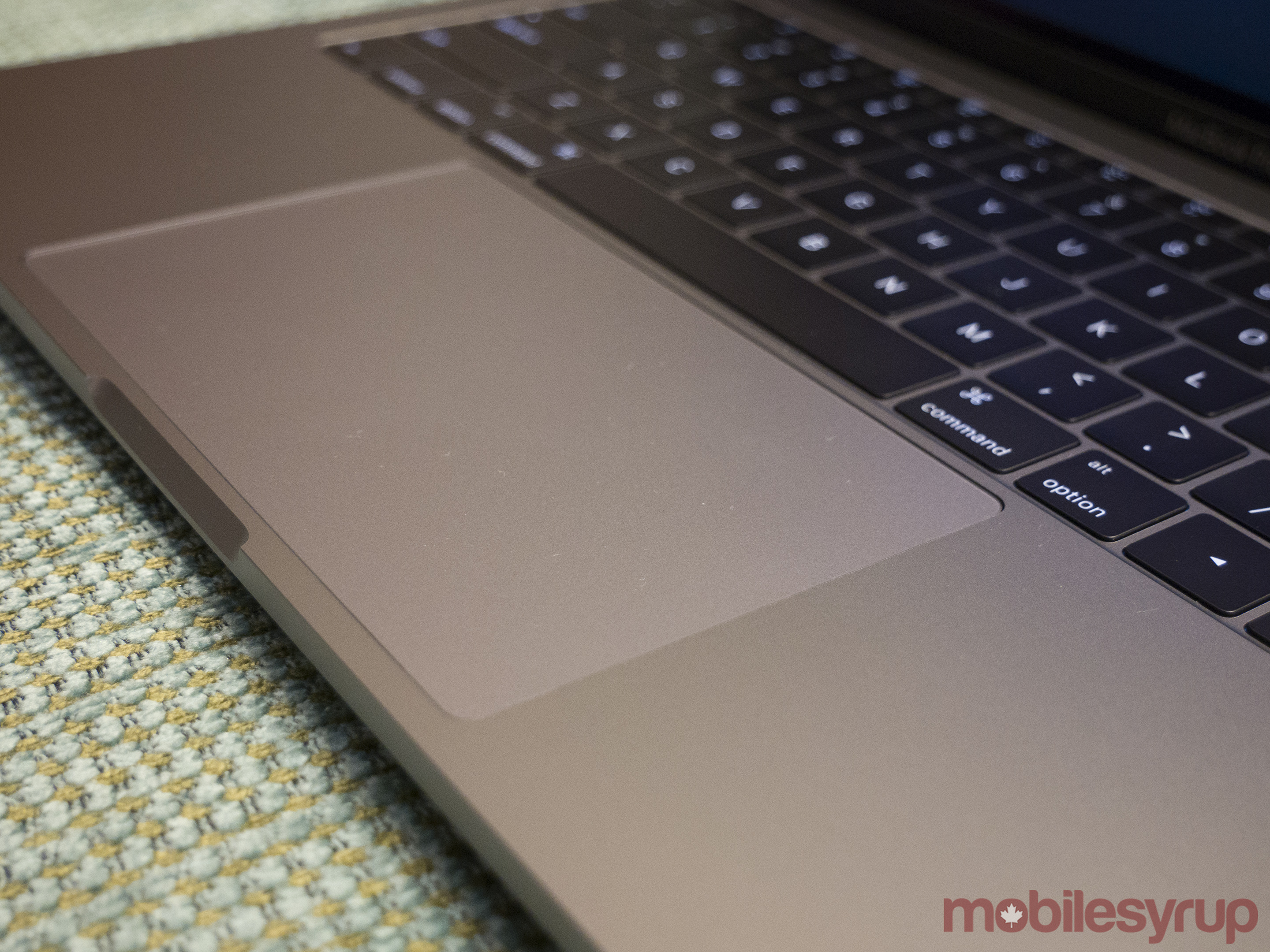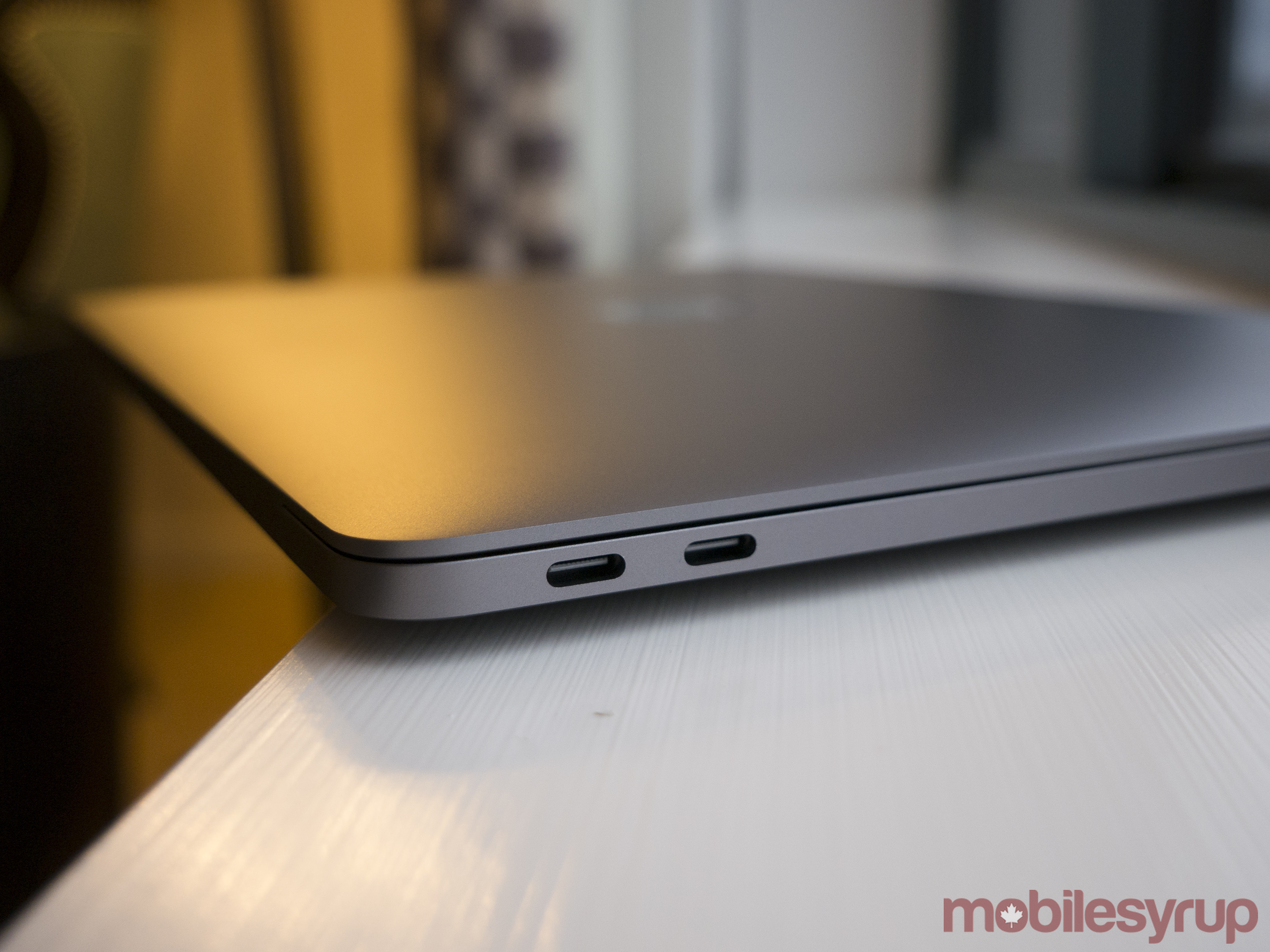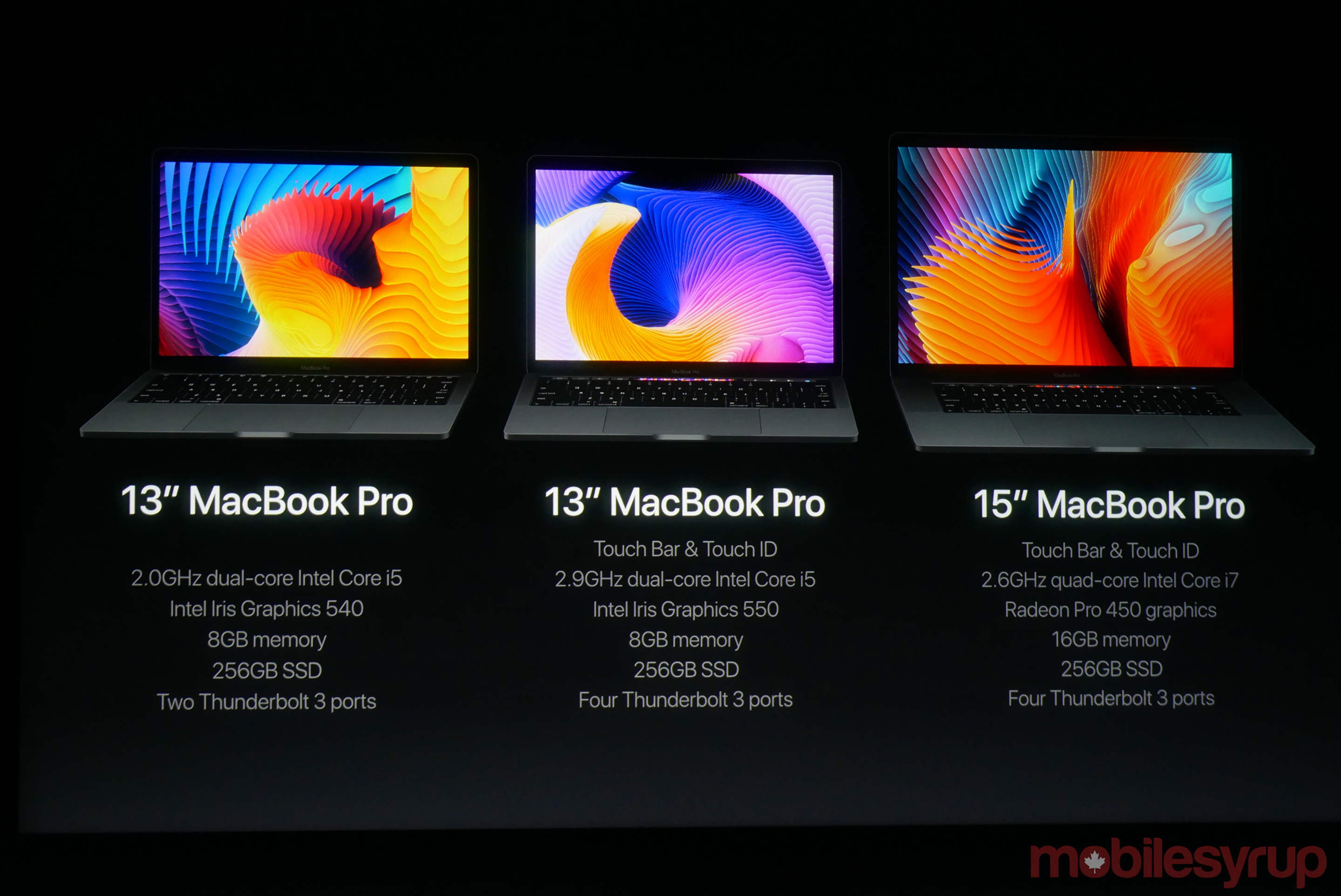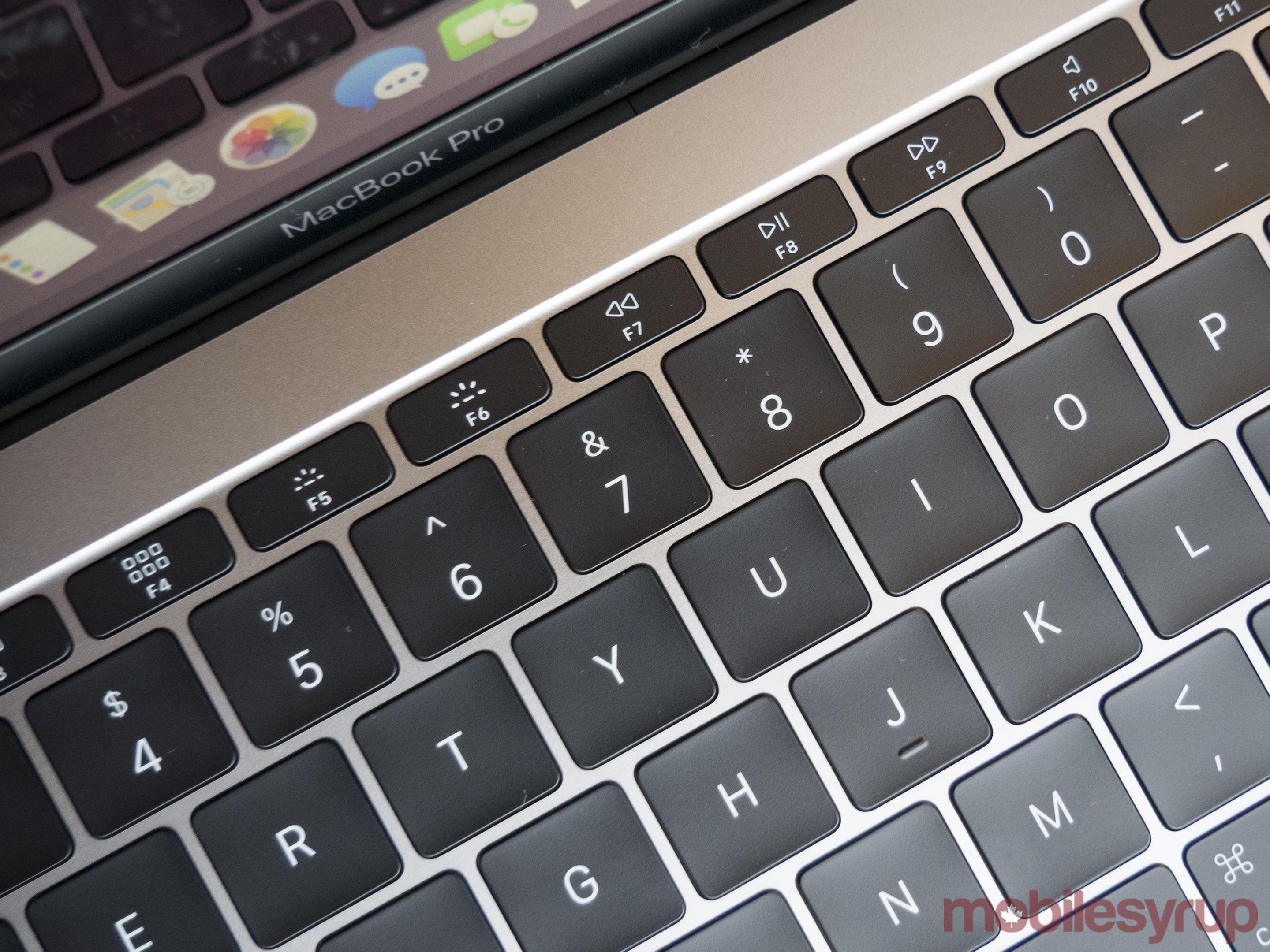
The MacBook Air has essentially been pushed aside by Apple, but from its ashes, rises the 13-inch MacBook Pro, a worthy, but still expensive no-frills successor to what is regarded by many as the best laptop ever made.
This version of Apple’s new, revamped MacBook Pro line does not include the heavily touted Touch Bar, that feature is reserved for the company’s two higher-end models.
The build
If you were hoping for a reimagining of the laptop akin to Microsoft’s Surface line, Apple’s 13-inch Pro is not for you. The new MacBook Pro features an aluminum body that’s very similar to the one that encased the previous MacBook Pro, though it’s 17 percent lighter and features 23 percent less volume than the previous generation of the Pro.
It comes in at 1.3kg (about 3lb), approximately half a pound lighter than the older 13-inch Pro. In fact, if you were to compare the 13-inch MacBook Pro with the 13-inch MacBook Air, the new version is 12 percent thinner — though it doesn’t feature the same slanted body — and it’s also the same exact weight. The laptop is now available in two finishes as well: Silver and Space Grey, which was dropped from the iPhone line with the 7 and 7 Plus.
Stunning display
Apple likes to tout its intricate design process with wordy acronyms and sometimes abstract concepts, and that hasn’t changed with the 13-inch Pro. In fact, it’s progressed to a new level, with the company claiming the Pro’s display features “oxide TFT” technology that allows it to be 30 percent more power efficient than the screen in the previous generation of devices.
I have no idea what oxide TFT is or what it does to make the Pro’s screen look better, but what I do know is that I’m impressed with what I’ve seen of the display so far.
All technical jargon aside, the Pro’s screen looks great, likely because the company says it’s 67 percent brighter than the previous MacBook Pro screen, allowing you to see more detail in bright ambient light conditions.
I’ve spent time browsing the internet, watching Netflix and even edited a few photos with the laptop’s 2560 x 1600 pixel display.
Keyboard and Trackpad upgrades
Similar to the Touch Bar featured in its high-end siblings, the low-end Pro features the Butterfly keyboard mechanism pulled from the 12-inch MacBook. While some hate this revamped keyboard, I’m fond of it and find it not only allows me to type faster but more accurately as well, especially when compared to the old school Pro and Air typeface.
After spending about 20 minutes typing on the Pro’s new keyboard, including while writing up this hands-on, I started to notice that the keys actually feel slightly more responsive than the ones present in the Pro’s smaller, 12-inch brother. I’m not sure why exactly, but they do. The standard function keys present in older versions of Apple’s laptops but absent from the new Touch Bar wielding devices, also makes a return in this lower-end iteration.
Here’s where things get worthwhile, though; apart from an obvious subtle aesthetic shift to a flat, no longer slopped body, the new MacBook Pro’s absolutely massive trackpad is a welcome change.
Multi-Touch gestures are easier to input thanks to the trackPad’s 46 percent larger size. I’ve always found Apple’s trackpads to be the differentiating factor in the laptop market. Despite how much I like Microsoft’s Surface Book and to a lesser extent, the Surface, neither device’s trackpad feels as fluid as Apple’s technology, especially when the new Pro is taken into consideration.
I’m less fond of the shift towards Force Touch and away from a physical click, but similar to the 12-inch MacBook, I’ll likely get used to it. It’s also worth noting that the virtual Force Touch “click” in the Pro actually feels more satisfying than the tech did with the 12-inch MacBook.
Under the hood
Apple has made some lofty claims about the 13-inch Pro regarding its hardware prowess, stating that its Core i7 Skylake architecture and integrated Intel Iris Graphics 540 card are significantly more powerful than the tech featured in its predecessor. Some expected more of a technical leap with Apple’s new Pros that included Intel’s new Kaby Lake architecture as well as an independent graphics card on the lower-end version, especially considering their hefty price tag, but unfortunately that is not the case.
All in, Apple claims that the new 13-inch MacBook is 80 percent faster than the previous generation of the 13-inch MacBook Pro. While this is likely true, I haven’t had enough time to push the computer yet. On paper, however, the new Pro is certainly impressive, with the laptop sporting 8GB of RAM, Intel Core i5 processor and a 256GB SSD drive.
Where things start to get murky is when the laptops Thunderbolt 3 (which are just USB-C ports) are taken into consideration. Yes, USB-C makes life difficult right now, but there is no doubt that it is the future of connectivity. Would it have been great if Apple included USB-C and standard USB-A ports in the Pro? Definitely, but that also would result in the laptop being slightly thicker.
Like it or not the #donglelife is here to stay, at least in this awkward transition period between port technology.
The 13-inch Pro features two USB-C ports that can be used for charging, instead of the four featured in its 13-inch and 15-inch with Touch Bar compatriots. While I’ve defended the decision to opt for USB-C in these new laptops, what’s impossible to argue is how easy it would have been for Apple to include a free adapter that allows older USB-A to be plugged into the laptop. Apple definitely heard the vocal complaints from 12-inch MacBook owners but opted not to listen when it comes to this refresh.
High price tag
The 13-inch Pro’s price tag is unfortunately astronomical, especially in Canada, coming in at $1,899 to the shock of many of us living north of the border.
The price is difficult to navigate, especially when the laptop, despite a minor aesthetic face lift and a collection of new features, may not be enough of an upgrade for those who recently purchased a MacBook Pro or Air.
If you have an aging MacBook Pro Air, one from 2012 or even as far back as 2011, this could be the device for you, especially if you scoffed at Apple’s more expensive Touch Bar equipped versions of the new Mac.
Related: MacBook Pro 2016 Hands-on: A future without function keys
MobileSyrup may earn a commission from purchases made via our links, which helps fund the journalism we provide free on our website. These links do not influence our editorial content. Support us here.

